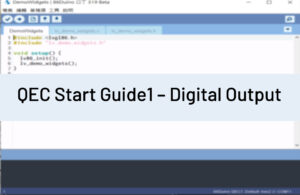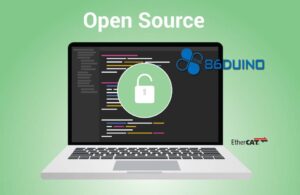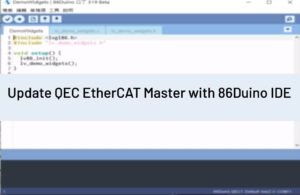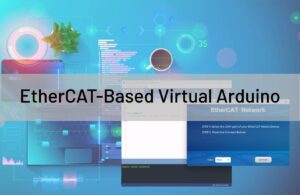[QEC教程]
本範例展示如何透過 86Duino IDE 的圖形化低程式碼程式設計工具 86EVA 和 ArduBlock 來操作 QEC-M (EtherCAT Master) 和 QEC 的 EtherCAT Slave 數位輸入輸出模組,以執行基本應用並查看實際物理狀態:透過EtherCAT 數位輸出從站模組控制外部LED,並透過EtherCAT 數位輸入從站模組接收其狀態。
軟體工具說明
- 86EVA (EVA, EtherCAT-Based Virtual Arduino):
是基於 86Duino IDE 中 EtherCAT Library 的圖形化 EtherCAT 組態工具,是 86Duino 的開發套件之一。 - ArduBlock:
是用於程式設計和IO控制的圖形介面。 它是屬於Arduino IDE的第三方軟體,由上海創作者David Li開發,必須附加到IDE上才能運作。 ArduBlock是一款將圖形塊轉換為程式碼並最終產生主程式到86Duino Coding IDE,然後編譯並上傳的軟體。
由於本文件是 “ EtherCAT 範例:QEC 數位輸入/輸出" 的延續,如果您對教學中的硬體有任何疑問,請閱讀 EtherCAT 範例:QEC 的數位輸入/輸出。
軟體
硬體說明
- QEC-M-01
- QEC-R11DF0: EtherCAT 16數位輸入通道從站模組
- QEC-R11D0F: EtherCAT 16數位輸出通道從站模組
- 其他:
- 網路線
- 24V 2A 電源
如果這是您第一次執行 86Duino IDE,我們建議您閱讀 為 86Duino 設置 QEC-M-043T 。
教程
學習更多
您可以在EtherCAT 應用找到更多QEC的基礎應用介紹。



